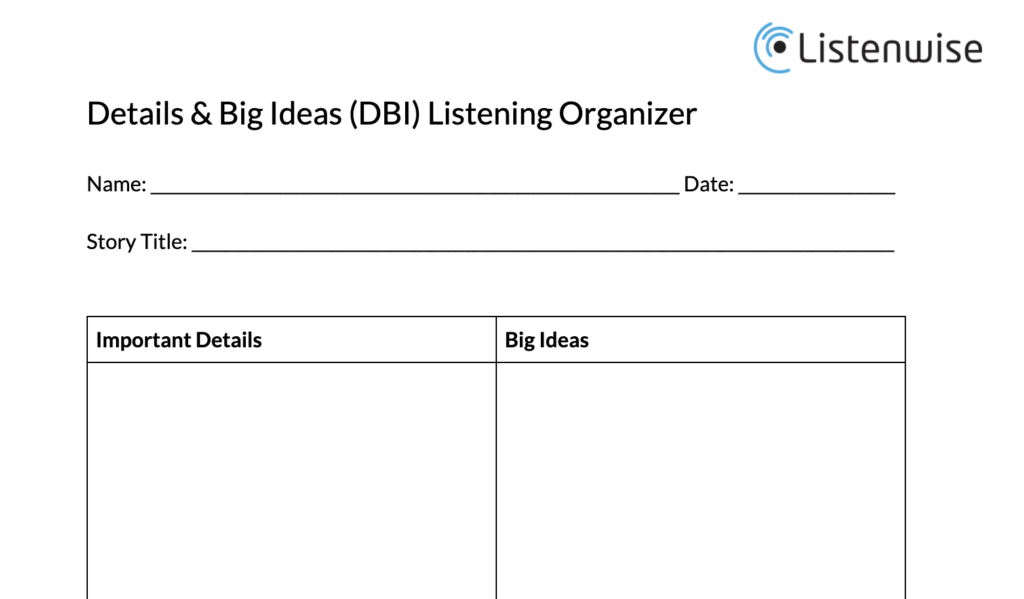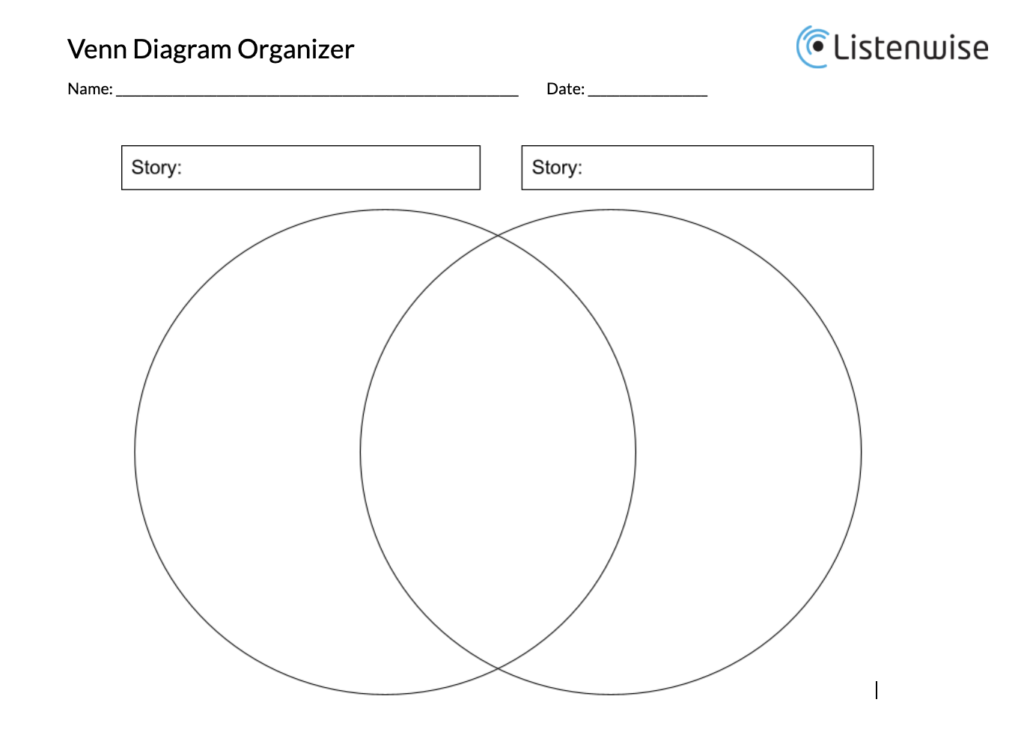Last Updated on January 3, 2025
Student choice activities are an important lever for engagement and personalized learning. The Universal Design for Learning Guidelines suggest “optimizing individual choice and autonomy” as an effective strategy for “providing multiple means of engagement” when designing learning experiences.
Any student should be able to find a story of interest among the 3000+ short, engaging audio stories about a wide variety of topics on the Listenwise platform. You can structure student choice activities with student-selected quizzes, with regular routines for individual students to follow when listening to any story they choose, or with more structured discussion activities that facilitate sharing among students who listen to different but related stories.
Customizable Listening Organizers for Any Story
You can invite students to choose a story that interests them and complete an assignment using a listening organizer and/or a standard routine, such as writing a learning reflection, or (taking turns) sharing a summary orally and holding a Q&A for five minutes at the beginning of class.
Students can use listening organizers such as those below with any audio story to help them focus while listening. You can save and customize these organizers as you wish and then share them with students, either in digital form or as printed PDFs, depending on your classroom context and instructional needs.
Details and Big Ideas (DBI) Organizer – To note important details and big ideas as students listen to an audio story (starting with details and noting big ideas or themes as they emerge)
Ideas and Supporting Details (ISD) Organizer – To note key ideas and supporting details as students listen to an audio story (starting with key ideas or claims and detailing support for those ideas)
Fact-Question-Response (FQR) Organizer – To note facts from the story, questions about the story, and responses to the story while listening to an audio story
5 Ws Organizer – To support summarizing an audio story by noting the 5Ws of journalism: who, what, where, when, and why (and sometimes how)
3-2-1 Organizer – To note as students listen to an audio story 3 facts from the story, 2 questions about the story, and 1 big idea from the story
Venn Diagram Organizer – To compare important details and big ideas from two different but related audio stories
Debate Organizer – To note the pros and cons of an issue presented in a single story or in two or more different but related audio stories
Word Map (Frayer Model) & Word Knowledge Organizers – To note unfamiliar words encountered while listening to an audio story and determine or clarify a word’s meaning through multiple means of representation
Listen–Pair–Share Activity
A simple way to set up an activity that involves student choice is Listen–Pair–Share. This is a variation of the familiar Think–Pair–Share activity and involves thinking at every step.
In this activity, students select a story from an audio text set chosen by the teacher or a curated collection and take notes while listening to it using an organizer to focus their listening. Then they share what they heard with a partner and discuss common themes.
Finally, pairs share highlights of their conversations with the whole class, and the group discusses common themes across all stories. You can save this sample Google Doc and modify it with your own story list. (Remember to use “Share Audio” student links in your hyperdoc lesson.)
Listening Jigsaw Activity
For a more involved cooperative student choice activity, you can set up a jigsaw activity with same-story groups and mixed-story groups. In this activity, small groups of 4-5 students listen to different but related stories. You can assign each group a story from a thematic audio text set with varying Lexile levels or perspectives, or you can invite students to choose a story from a short list and then group them together accordingly. You can assign the stories within the platform and ask students to use the listening organizer and answer the comprehension questions or assign them via Google Classroom or another LMS and create your own task.
After students listen to the story and take notes using a common listening organizer (either within the platform or using one of the organizers listed above ), they then meet with others who heard the same story and compare notes. This can help them to deepen their understanding of the story, benefitting from multiple perspectives on the same story. Ask them to add to their notes from their same-story group discussions in preparation for sharing the story with their mixed-story groups.
Next, students meet in small mixed-story groups, comprised of students who listened to different stories. Students share notes on the stories they heard and discussed in their same-story groups with others who heard different stories. Assign the mixed-story groups a task that requires understanding of all related stories, such as identifying an idea that is common to all stories. For example, they might identify an experience that is common to all the refugees featured in 4-5 different stories, or list various problems caused by climate change explained in 4-5 different stories.
Finally, all mixed-story groups report on their work, followed by a class discussion about commonalities and differences among the reports.
If you have other ideas for designing structured student choice activities with podcasts, please share them in the comments.





